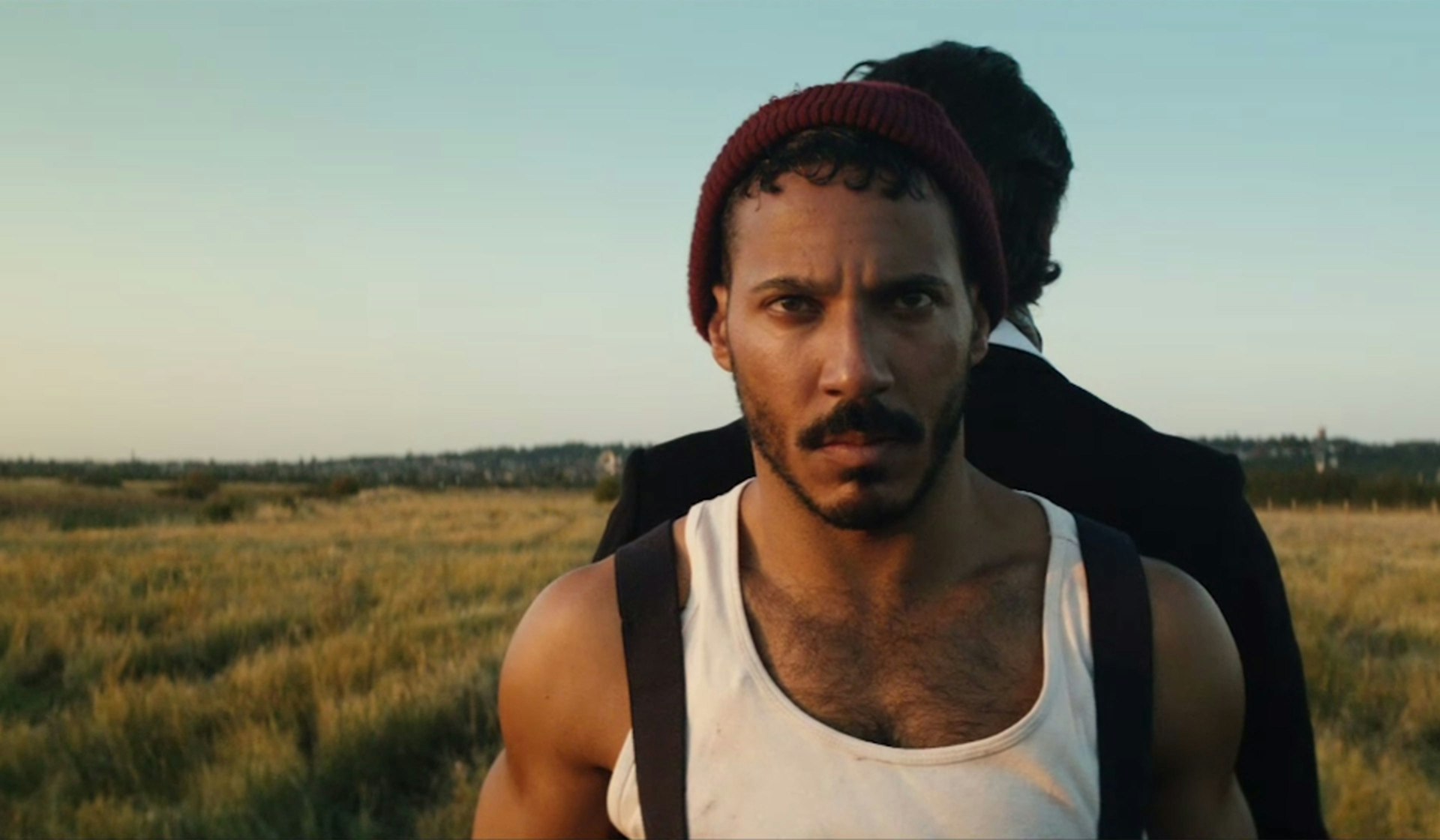Finding focus as a photographer is often the first obstacle to honing in on what makes your voice unique. At a time when images and information comes at us from all angles, there is no shortage of “good ideas”. But all that choice – all those projects being ‘Liked’ and stories ‘Shared’ – can make even the most ambidextrous multi-tasker want to throw down their camera and retreat to a dark and quiet cave. Which is where a good-old assignment really comes into its own.
A little bit of structure can go a long way. Stuart Pilkington knows this well. As a practicing photographer, and die-hard photography fan, Stuart’s insatiable enthusiasm and love for the creative process has led him to kickstart a long and varied stream of rewarding, pressure-free, fun scenarios for independent photographers looking to try new things, and reach new eyes.
With The Alphabet Project, he brought together 26 photographers whose names ran from A-Z; Twelve Faces set 12 photographers the task of shooting a dozen portraits each; The Swap nudged photographers into the subject’s seat; The Three Disciplines challenged shooters to throw themselves into a new field; and that’s just a handful of Stuart’s big ideas. But perhaps the most emblematic of his community approach was, and still is, The Chain, which connected 107 photographers in a veritable stream of inspiration, with each person handing on a brief to someone else.
Stuart, as photographers spread across the world will agree, is the vital link connecting all these people, images and ideas. He is by any measure a true custodian of the arts; someone who supports photography for the purest of reasons, and is always pushing others into the light.
This year, Stuart founded the Pilkington Prize, an annual competition for photographers from all backgrounds that will set a new brief each year. 2015’s installment, 100 Mile Radius, invited photographers to shoot a landscape within 100 miles of their home. And the response, as expected, was huge, with emerging shooters and established practitioners getting involved from all corners of the globe.
On September 14, 2015, at the age of 44, Stuart suffered a sudden and serious stroke. News spread fast, via thoughtful updates from family, and within hours the community that the curator had helped build was rallying together to pay tribute to a treasured friend; the vital link in their ever-growing chain.
So here’s a reminder, Stu, that everyone is here, rooting for you to get better and start dreaming big again real soon, so that more moments can be captured and shared.
Andyx
(Andrea Kurland, Editor)
100 Mile Radius
The Winners: Part One
Get to know this year’s Pilkington Prize Top Ten, just some of the photographers that Stuart’s brought together.
Matt Botwood
Brecon Beacons, Wales
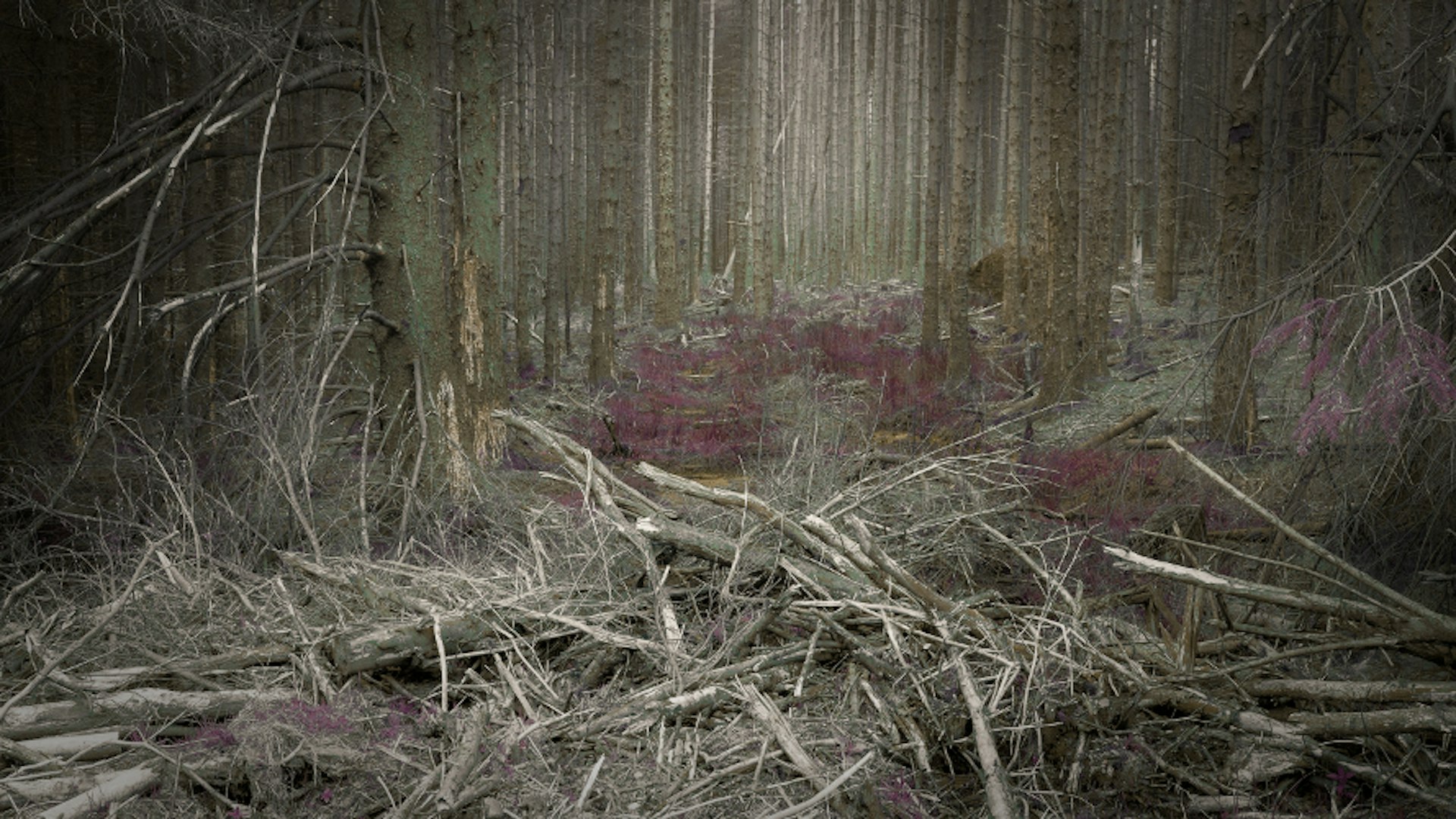
Matt Botwood initially pursued photography as a hobby, but when he became the primary carer for his son, he decided to leave his career in scientific IT to pursue his passion full-time. His work concentrates on “dark landscapes”, and his recent self-published book Travels in a Strange Land: Dark Spaces sees Botwood using negatives to transform woodland details into fantasy landscapes.
“I can’t imagine making images in a studio,” he says. “I prefer the unpredictability of nature to having complete control over the environment in which I work.”
And yet, Bottwood doesn’t look to landscape photography for his lead. “There’s a fine dividing line between being inspired by someone’s work and trying to emulate it,” he says. Instead he takes inspiration from street photography, which he feels can convey a message in a single image.
Botwood admits that encapsulating his ethic in one photo for the competition was challenging, as he usually works in series. But after visiting a local forestry plantation, his vision came together in a single frame.
“Forests are dark and intriguing places that often hold secrets, and the mere fact that they seem impenetrable and few people want to enter them makes them all the more interesting to me,” he says. “A forestry plantation is a landscape that a lot of people have on their doorstep that is relatively unvisited. It is a place of true discovery where you might be the first person to have stood in a spot for many years. Many people spend vast amounts of time and money trying to visit new undiscovered landscapes, but sometimes they would do better to look closer to home, something that the 100 Mile Radius competition forces people to do.”
Michelle Waters
Parkersburg, WV, US
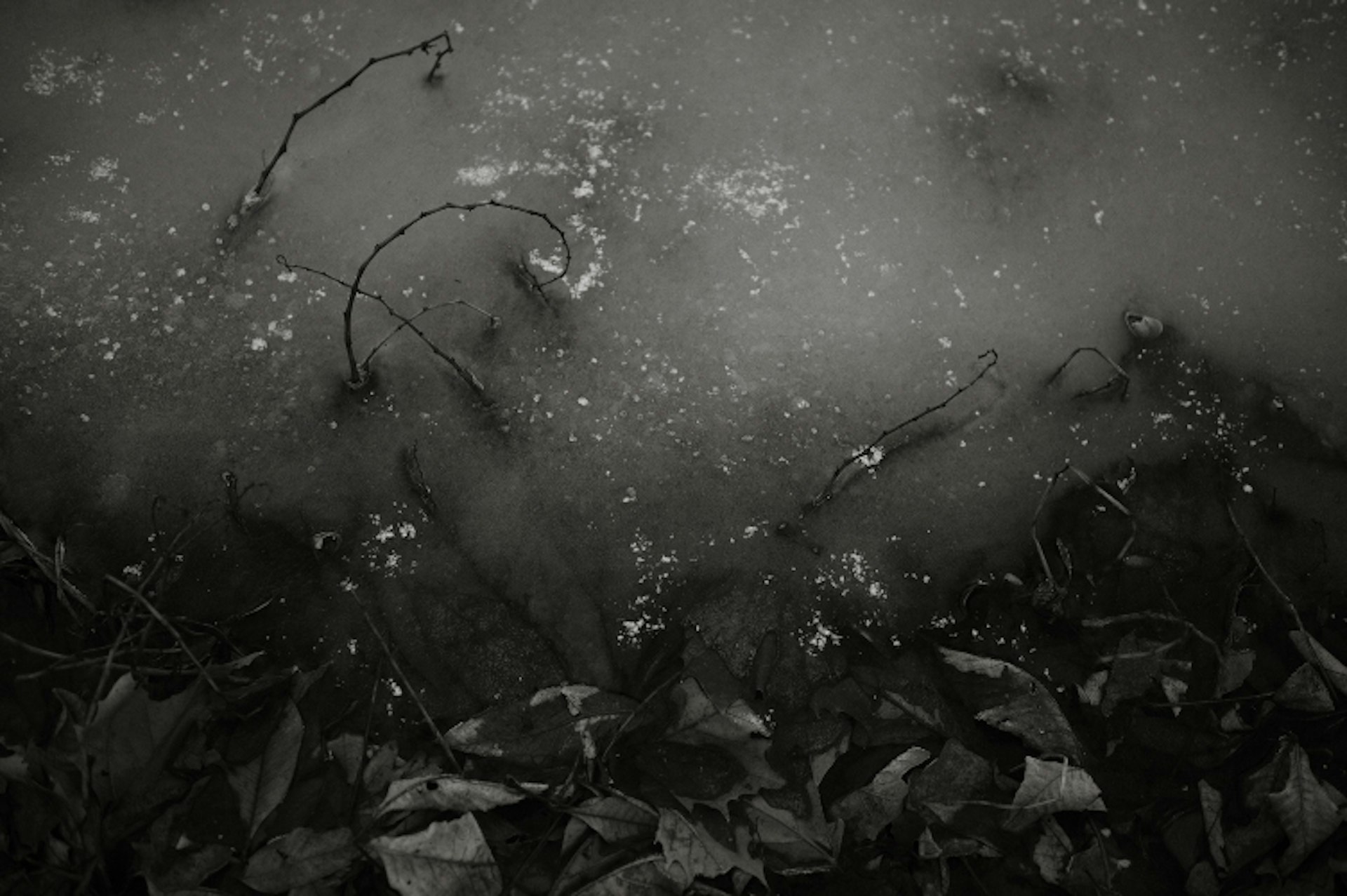
Michelle Waters’ path to photography started with a nudge of encouragement. “When I was in high school, one of my teachers told me he thought I was pretty good at photography, and it was the first time I’d remembered someone telling me I was pretty good at something. So I kept with it.”
When Waters moved from Ohio to Parkersburg twelve years ago, she started documenting a lake near her home as a way of working through her fear of water. That same lake is her entry for 100 Mile Radius. “I went back to this lake one morning, hoping to capture thawing ice – symbolic to me, as part of my eliminating and working though fears. I found this little section where everything just looked suspended, dreamlike, in what could have been an icy kind of sky. It felt perfectly held.”
Waters views all her work as a selfportrait, whether she’s capturing people or landscapes, and says her fascination lies in images that make us question reality and imagination.
“I’m more inclined to be inspired by an idea than what someone else has already done with an idea,” she says. “I’m also fascinated by overlapping worlds visuals that can allow us to question what is real and what’s imagined. So while I went looking for something specific, I always love being surprised by things I’m not looking for.”
Sandy Carson
Austin, Texas
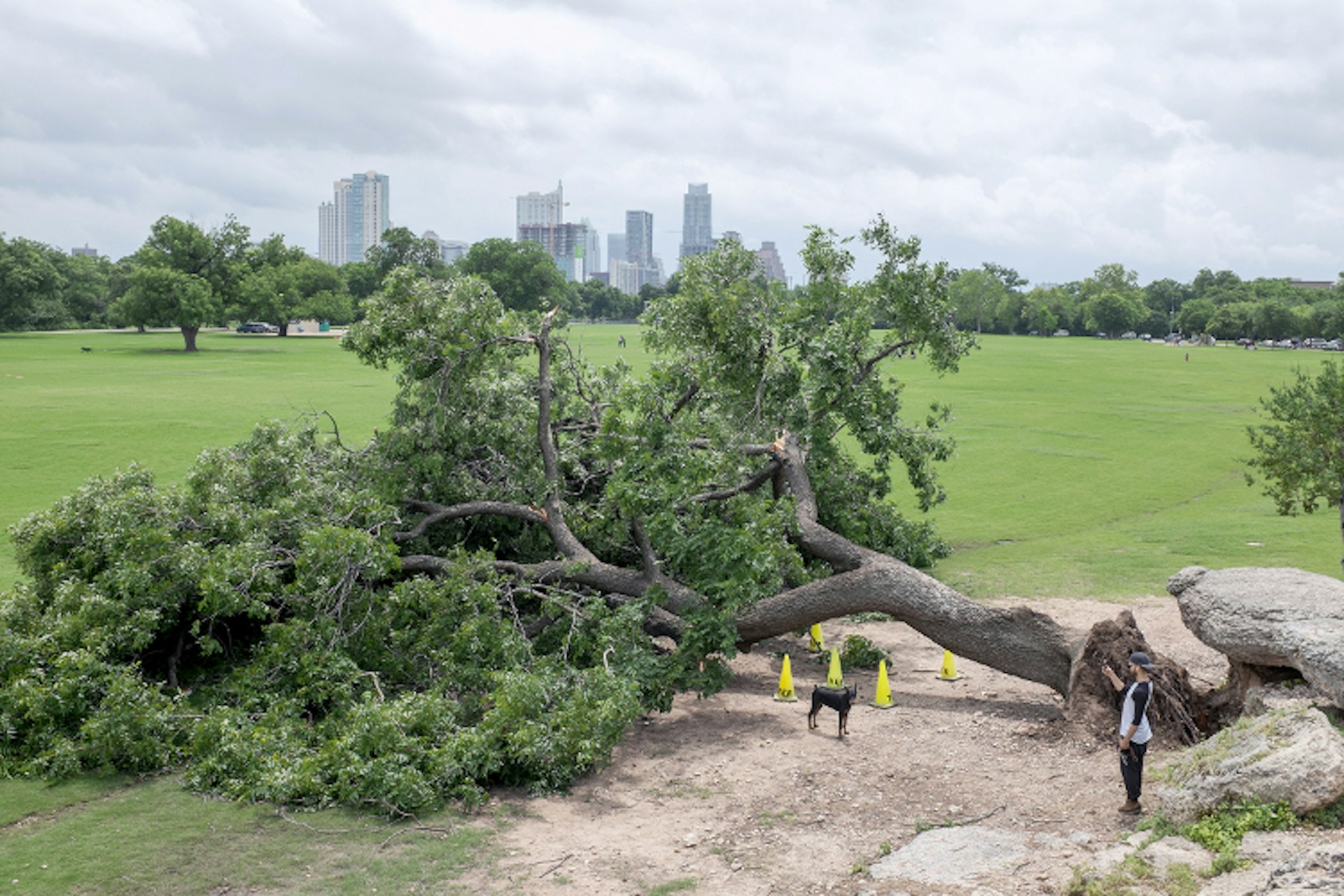
After moving to the States from Scotland when he was young, Sandy Carson spent fifteen years travelling the world as a BMX rider, honing his photography skills on the road.
Carson settled in Austin, which he says is developing at a great pace with an influx of 150 people a day. He likes to find the idiosyncrasies in landscapes, and his entry in the competition was taken after a huge storm in the city. “I stumbled upon this guy who climbed on the tree just to make a selfie, like it was the Leaning Tower of Pisa.”
“It reaffirmed my odd penchant for disaster landscape photography and the forces of nature that are beyond our control in the South,” he adds. “I wanted to touch on and preserve the ‘Keep Austin Weird’ and ‘Don’t mess with Texas’ slogans. Austin is developing at a swift pace, and the skyline is constantly changing since I moved here. The city makes a point of preserving historic trees but not so much old buildings that are replaced by condos.”
Carson’s documentary work takes lead from fast-paced street photography. But he welcomes the solitude of landscape photography, as it allows him to think more when composing. For inspiration, he looks to photographers such as Stephen Shore, Alec Soth, Brian Ulrich, Joel Sternfeld and Martin Parr. “These guys do it for me every time,” he says. “They are the masters of keen observation and composition. I enjoy a good bit of wit and vernacular in photography.
Lane Coder
New York and Connecticut

Lane Coder studied Fine Art at Parsons in NYC, but segued to photography after a friend lent him a Polaroid SX 70 camera. “The polaroids looked like little paintings and that’s all it took for me to redirect my focus to photography.” He went on to study photography at Parsons in Paris, graduating with a degree from the Art Center College of Design in Pasadena, California, now works as a commercial and fine art photographer in the Greater New York area.
Coder’s entry was captured in his hometown of Canaan, Connecticut, in a park he has been shooting for twenty years. He captured the image after a particularly heavy snow storm. “When I came across the fence that day, for me, it represented a violent, yet beautiful juxtaposition. The fence was originally damaged by hurricane Sandy in 2012, and as I see it get dwarfed by many feet of snow each winter, it is also a poignant reminder of how our climate is changing,” he says.
“I am amazed by how extreme the weather is becoming year after year and it is disconcerting. There was discussion in my family of even moving somewhere more stable and temperate, like California but in recent years, California is having worse problems. There is a record setting drought and wildfires that cannot seem to be controlled. I never set out to have a political agenda with my work but this particular photograph has forced me into this discussion and I am ok with that.”
Janneke Aronson
Utrecht, The Netherlands

Janneke Aronson grew up in the Dutch countryside and studied photography at the University of the Arts, where she graduated in 2013. Her love of photography stems from her childhood; she remembers sitting at her bedroom door, peeking out at her family when she should have been in bed.
“I found it incredibly interesting to just observe them,” she explains. “I even recall making little ‘click’ sounds to ‘capture’ moments I wanted to save. This hasn’t changed much, I still love to observe people and their behaviour. Only now I use a camera instead of a chink in the door and it’s the camera shutter that makes the sound instead of me.”
Most of Aronson’s work is focused on portraiture, though she stresses the importance of the context of place. “Showing how a person relates to his or her surroundings is maybe the most interesting aspect of photography,” she says.
Aronson’s image of a dry bulk terminal touches on her fascination with mankind’s unbalanced relationship with nature. “To me the image explores a fading boundary between solitary nature and the presence of civilisation, which never seems to be too far away, wherever you go. It’s surreal in a way, as the ‘nature’ which is presented in the image is implied. The image is shot at a dry bulk terminal, which stores biomass and coal. So, even what seems to be a rural environment, is in fact created by human action just like many places these days.”
She had to lug a ladder five miles to take this photograph, and as a result had back problems for two weeks. But it was worth it. “Getting into the top 10 felt like an extra reward for the misery that came out of shooting this photo,” she says.
Larry Schwarm
Kansas, US
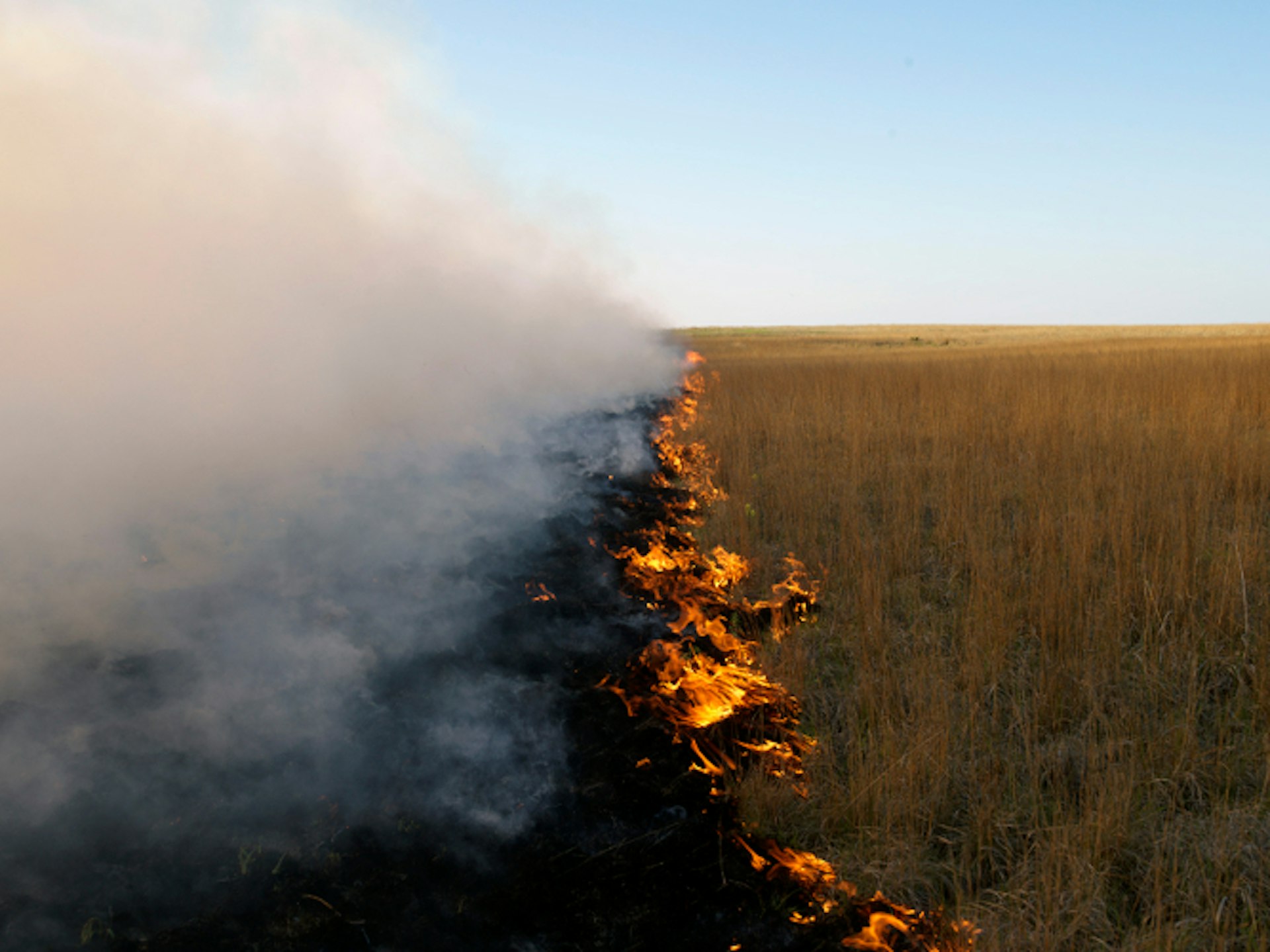
Larry Schwarm always had an affinity with landscapes, having grown up on a family farm in Kansas. “If you were to take a map of the continental United States and find the exact centre, you would be very close,” he says.
He studied sculpture initially, then turned to photography and eventually got the opportunity to lecture at a university in Kansas – “one of the best decisions [he’s] ever made.”
Schwarm’s entry for 100 Mile Radius, ‘Divided. South of Wellsford, Kiowa County, Kansas – 2015’, is a very distinct prairie, with a fire engulfing the wide landscape. He sees its message as “yin and yang” – everything having an equal opposite. “In order for prairies to exist, something must happen to keep invasive weed and tree species from overtaking it,” he explains. “Fire has always been part of that ecosystem. What used to be a natural occurrence is now controlled with prescribed burns by farmers and ranchers.”
“Landscapes marry my loves of photography and land,” he adds. “It is, as Henri Cartier-Bresson once said, ‘putting one’s head, one’s eye and one’s heart on the same axis’.”
Elizabeth Eiten
Michigan, US
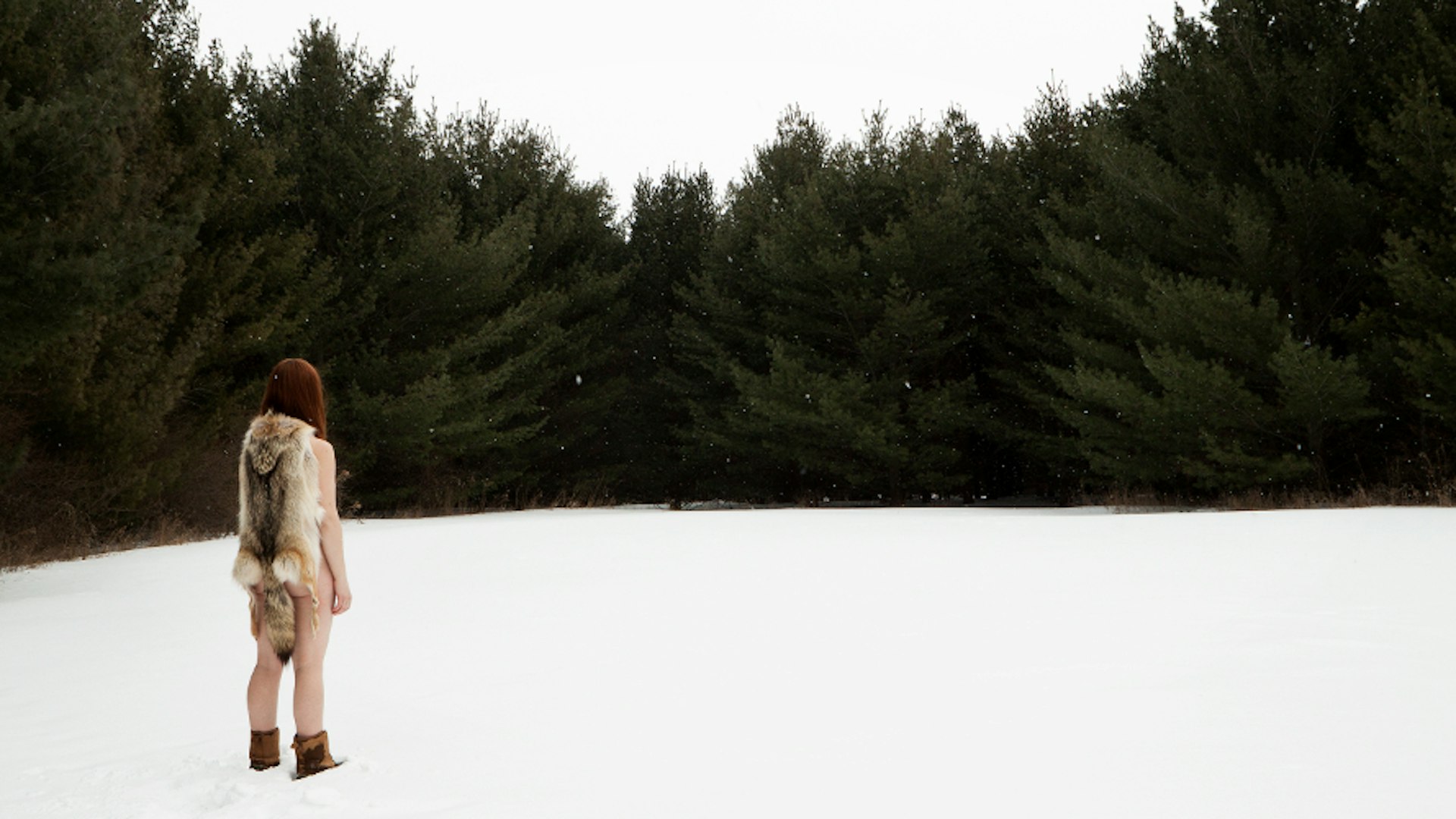
Though Elizabeth Eiten’s photography hasn’t traditionally included landscapes – instead focusing on still life and animals – she has turned to it more in her recent work.
‘Wild’, her entry to 100 Mile Radius, portrays a nightmare she had when she was a child. “I was walking naked through the snow, only wearing boots, towards what I believed to be someplace safe. When I made this image, I had recently left an abusive relationship and wanted to focus on growing from that experience. Working through my trauma in the form of art is cathartic, and has provided me a sense of empowerment,” she reveals.
It fits with her list of inspirations, which include courageous people such as Frida Kahlo, Dorothea Tanning, Francesca Woodman, as well as family and friends. “I think this piece speaks universally to human experience. Many people stay in toxic relationships due to the shame-based stigma regarding trauma and abuse. I wanted to show that committing to healing is difficult and scary, but the journey can also be gratifying.”
Kevin Hoth
Colorado, US – originally from Wisconsin
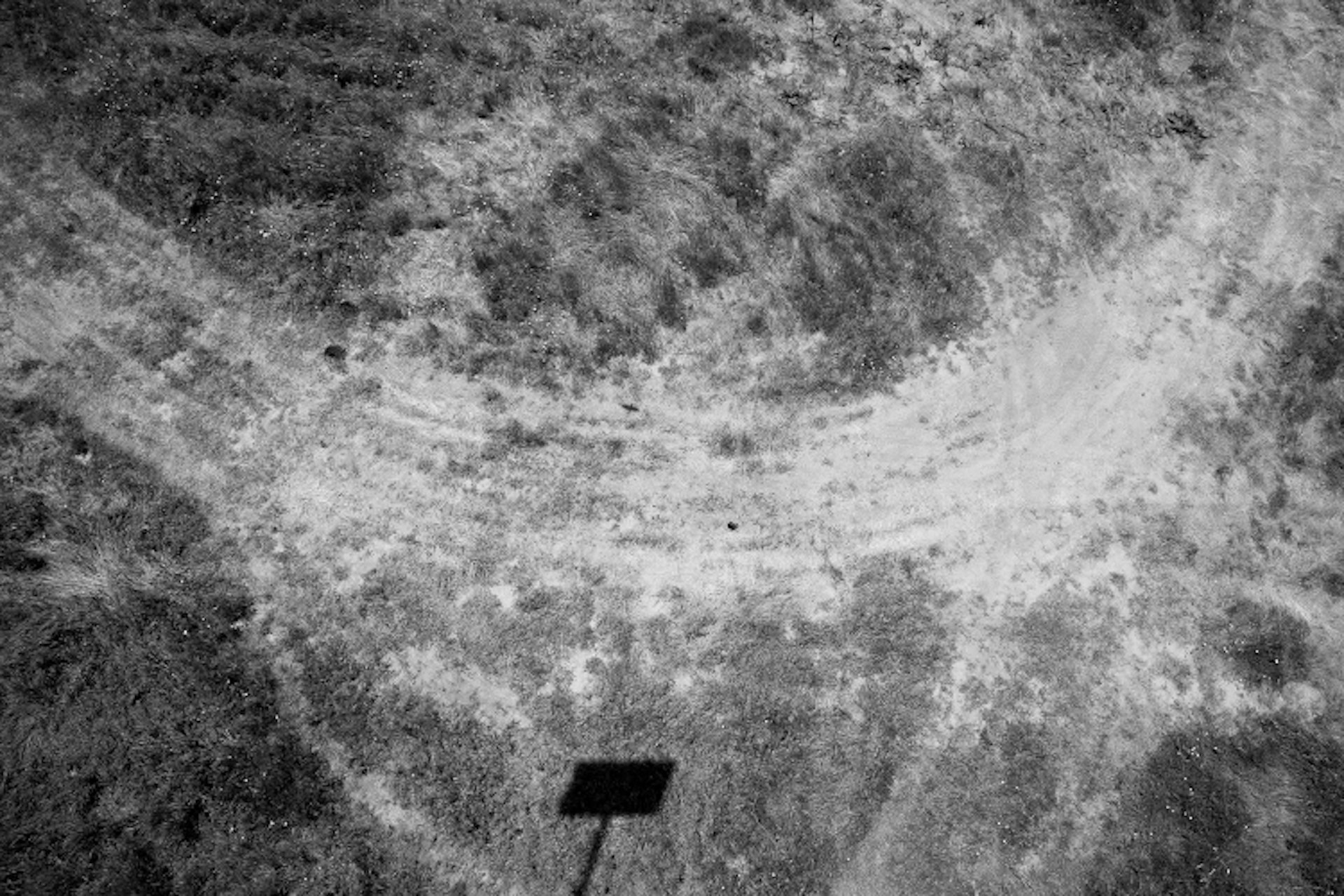
Kevin Hoth decided on a more unconventional approach to his landscape entry, ‘Net’, despite living in the vast landscapes of Colorado. He took the photograph on a trip to an animal sanctuary with his daughter.
“We were walking along the raised walkway they have above the animals and I thought the mix of worn truck and animal paths were interesting, conceptually,” he says. “It seemed like a perfect thing to shoot and I liked the overhead omniscient perspective similar to a drone’s point of view. The shadow of the bird is something I didn’t notice until I looked at the image at full res’ on my computer. That sealed the deal.”
He consciously wanted to avoid clichés about Colorado, and says that he this image taught him to go with his gut. Landscapes have always been the “backbone” of what he does. Hoth only recently focused his output in photography, having started his artistic outlet in drawing.
“A lot of contemporary photography bores me,” he says. “It often can only be appreciated when you know something conceptual about the project. For me photos should slam you just in the looking, in the way they communicate something visually, gorgeously.”
Aaron Claringbold
Melbourne, Australia
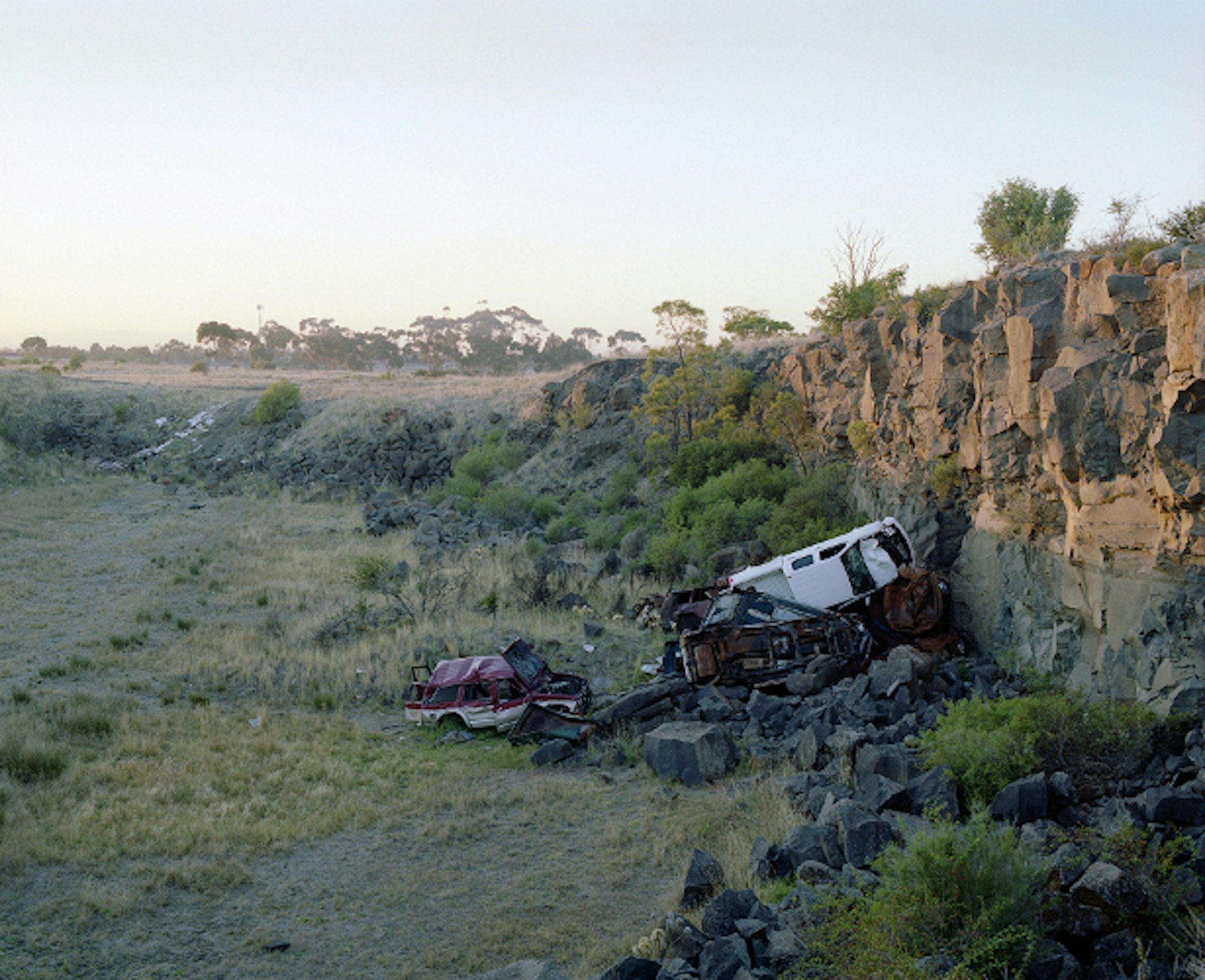
Aaron Claringbold’s photograph ‘Where Stolen Cars go to Die #2′ contains a thousand possible stories in a single frame, but he insists he “wasn’t trying to convey anything other than what is there, and then only to try to communicate a little of the experience of the environment and landscape.”
It shows a pile of cars lying in no man’s land in the northern suburbs of Melbourne and forms part of a wider project exploring ideas of emotion, control and ownership.
He has done a BA in photography and strives to find the idiosyncrasies in landscapes in his work. “I don’t think I often learn much through the making of an individual image,” he says. “Certainly I learn new things through the process of planning and realising a project or an idea, but mostly in the early stages of conceptualising and then in the editing down.”
Claringbold takes inspiration from “artists from all walks of life, people who know how to communicate,” from musicians like Tom Waits, Tracy Chapman and Nick Cave to writers like James Baldwin and Noam Chomsky, by way of photographers such as Gregory Halpern, Jo Ann Walters and Rinko Kawauchi.
“I’m unsure what it meant by landscape photography,” he reveals. “I make a lot of photographs and the land is in almost all of them (visible or not). Landscape has a much more functional memory than humanity, and serves as a much better record than photographs.”
Find out more about 100 Mile Radius and Stuart Pilkington’s other projects at thepilkintonprize.co.uk.
Enjoyed this article? Like Huck on Facebook or follow us on Twitter.
